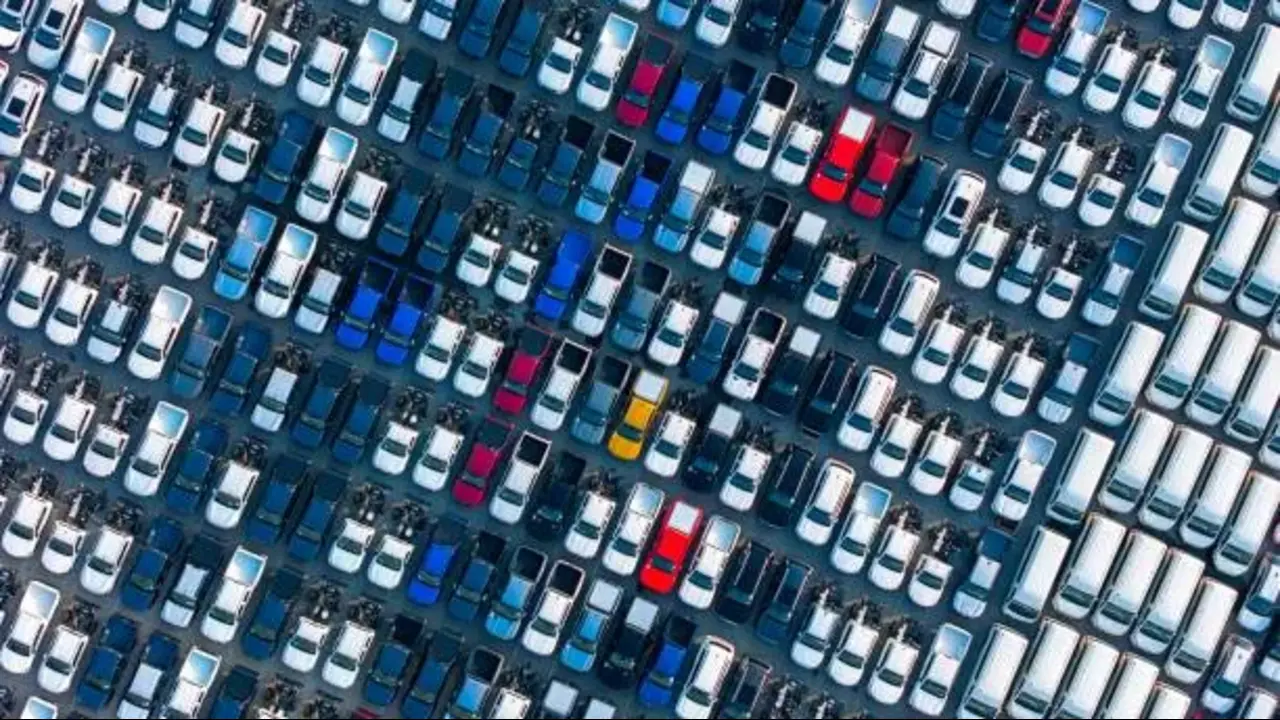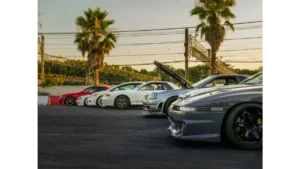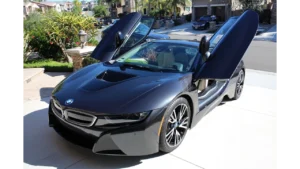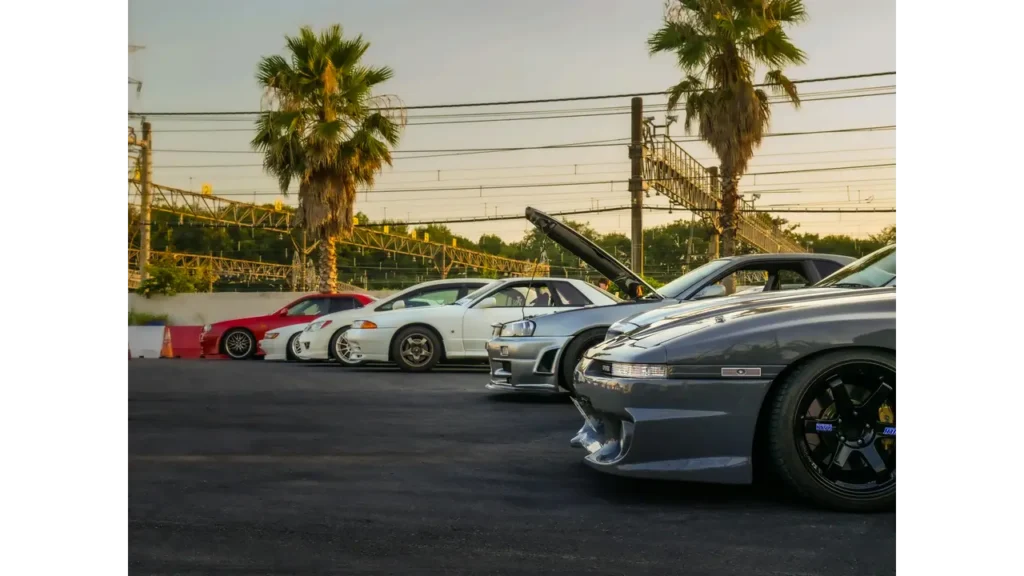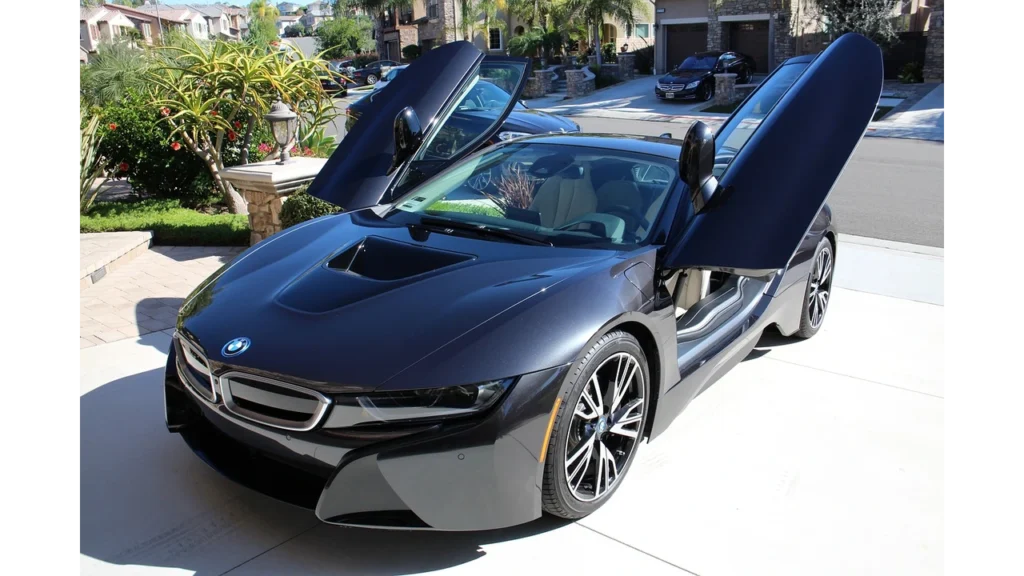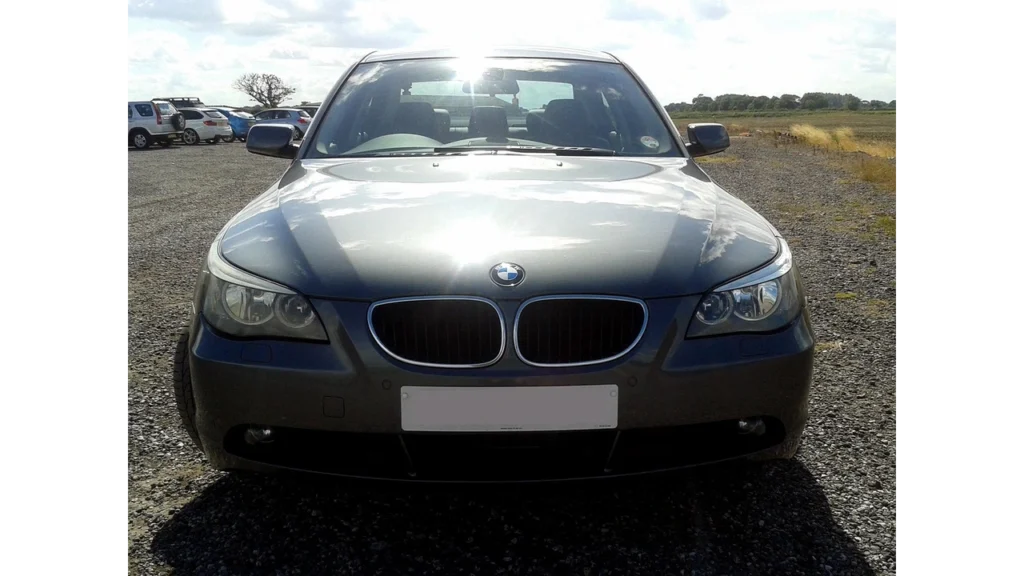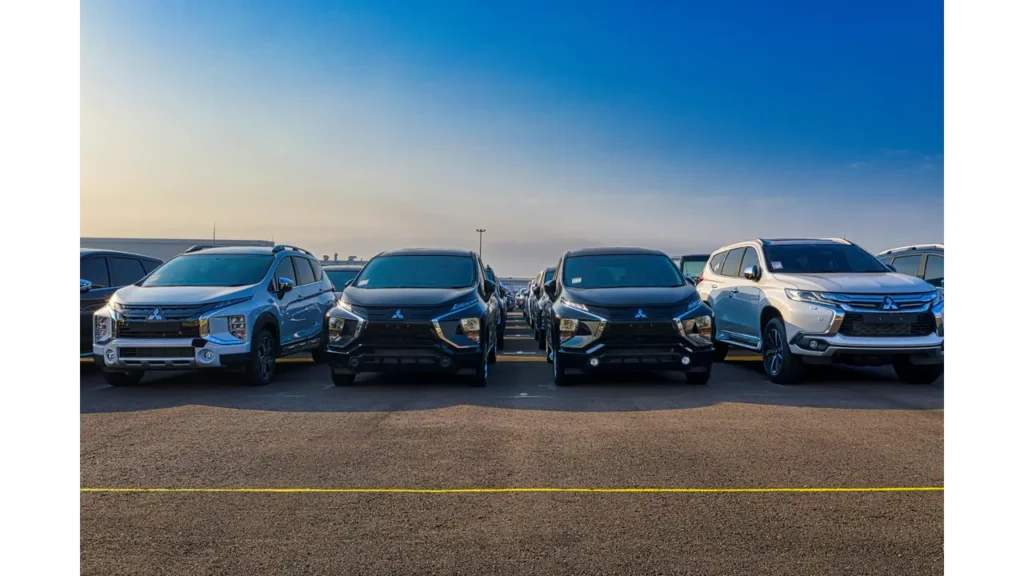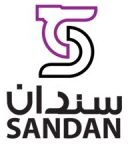Introduction
Finding used cars in Oman is less about luck and more about knowing where trustworthy inventory lives. The market spans three primary ecosystems: verified dealers with licensing and warranty pathways, high-volume online platforms with search filters and pricing data, and social groups that trade speed for higher due-diligence demands. Each ecosystem connects to the same compliance chain: inspection quality, registration with the Royal Oman Police, and paperwork that proves legal ownership. The fastest transactions usually pair an inspection report with a documented service history and transparent pricing logic. The safest transactions add institutional signals such as licensed showrooms, financing support, and on-site insurance.
A practical route begins at a physical hub with concentrated services. Sandan Industrial City functions as a dense automotive marketplace where showrooms, inspection centers, and documentation support sit side by side. Dealer discovery and service coordination can start at with specific workshop and paperwork support via Sandan Services. For research-driven buyers comparing dozens of models, online platforms provide broad visibility and market benchmarks. Social groups can surface rare trims, yet require tighter verification and secure payment practices. The sections that follow map each channel’s strengths, risks, and best practices.
Key Takeaways / TLDR
- Verified dealers trade convenience and legal clarity for a small pricing premium.
- Online platforms offer breadth, pricing signals, and filters that speed shortlisting.
- Social groups require stricter verification and documented inspection before payment.
- Sandan Industrial City centralizes inspection, financing, and transfer steps to shorten cycle time.
Verified Used Car Dealers in Oman
Verified dealers reduce uncertainty by aligning stock preparation with inspection, warranty, and registration support. Licensed showrooms publish VIN-matched listings, provide pre-purchase inspection reports, and handle ownership transfer with the ROP. Many maintain in-house service bays or partner workshops for reconditioning. The premium paid at a verified dealer typically buys service history validation, standard return windows, and assistance with financing or insurance.
Authorized brand networks remain the anchor for models with certified programs. Their benefits include factory-aligned checks, mileage caps, and warranty coverage that supports residual values. Independent certified dealers, especially those clustered inside Sandan Industrial City, widen brand choice while retaining structured documentation. Sandan’s ecosystem connects showrooms, inspection centers, and lenders, enabling a single-visit path from appraisal to registration.
Trust signals separate strong dealers from casual sellers. Look for trade licenses, permanent premises, signed inspection reports, odometer disclosure, and escrow or bank-to-bank payment guidance. Clear bills of sale should reference VIN, agreed condition, and any add-ons such as extended warranty or ceramic coating. Dealers positioned in regulated clusters also tend to manage recalls and software updates, which matters for late-model vehicles and hybrids.
Pricing remains competitive when dealers source efficiently. Inventory acquired from private owners or corporate fleets with documented maintenance often qualifies for better financing and insurance rates. Dealers that publish paint-meter readings, OBD scans, and tire dates shorten buyer deliberation and support quicker loan approvals. In Oman’s climate, proactive cooling system checks and battery testing are valuable signals that the car is road-ready, not just showroom-clean.
Used Car Platforms & Marketplaces
Online platforms provide the widest lens on Oman’s used car supply. High-quality portals offer granular filters for make, model, trim, year, mileage, transmission, accident history, and service records. Rich listings include multi-angle photos, inspection badges, and price histories that act as negotiation anchors. Saved searches and alerts reduce time spent revisiting inventory and help track fast-moving segments such as compact SUVs and mid-size sedans.
Verification standards vary by site. Some platforms vet dealer accounts and label certified listings, while others function as open classifieds. The safest experiences pair a platform search with third-party inspection and a controlled handover location. Many buyers shortlist online, then route the preferred vehicle to an inspection center inside Sandan Industrial City for diagnostics, chassis checks, and emissions testing. That workflow aligns portal breadth with in-person verification and immediate access to registration support.
Payment and paperwork hygiene matters online. Avoid cash handovers in informal settings. Prefer traceable transfers, clear bills of sale, and escrow when available. Ensure that the seller’s identity, VIN, and title documents match listing data. Where platforms offer finance calculators, use them for directional budgeting, then finalize rates with banks or finance partners located in Sandan’s cluster for competitive terms and faster underwriting.
Platforms can also surface imported stock. When a listing indicates recent import, confirm customs clearance, VAT paid status, and export certificates from origin. CIF-aware pricing helps translate the sticker into a true landing cost. For vehicles with advanced driver assistance or hybrid systems, prioritize listings that publish diagnostic snapshots and module health. Combining platform discovery with Sandan’s on-site services converts research into a clean, documented purchase path.
Facebook & WhatsApp Groups for Used Car Buyers
Social groups deliver reach and speed, particularly for rare trims, budget brackets, or last-minute sales. Discovery occurs through admin-run Facebook communities and WhatsApp broadcast lists where sellers post VINs, photos, and asking prices. Signal quality varies, so group governance becomes the first filter. Strong groups publish posting rules, forbid off-platform payments, and require clear photos with plate masking and visible chassis tags. Member history and comment patterns indicate trust; consistent listings from licensed dealers rank higher than one-off accounts.
Verification should precede any commitment. A practical sequence begins with a VIN check, service history evidence, and a recent inspection report. Listings lacking those artifacts should be routed to an independent inspection before any deposit. Pricing signals inside groups tend to reflect urgency more than condition, so paint depth readings, OBD scans, and tire date codes help correct for cosmetic staging. When a car is recently imported, proof of customs clearance, VAT paid status, and export certificates from origin narrow the risk window.
Transaction hygiene reduces disputes. Prefer bank-to-bank transfers under a signed bill of sale that lists VIN, agreed condition, and any included accessories. Meet at recognizable venues with camera coverage, ideally near inspection facilities. A common pattern in Muscat sends short-listed group cars to Sandan Industrial City for diagnostics and documentation support. Sandan’s cluster offers on-site workshops, verification services, and title transfer assistance, turning informal discovery into a structured handover.
Groups still carry higher variance than verified marketplaces. Price outliers often conceal accident histories, flood damage, or odometer discrepancies. Admin moderation and community reporting improve safety, but formal documentation remains decisive. When a post advertises finance availability, confirmation with lenders should occur before inspection day to avoid timing gaps. Social channels work best as a lead source, not a settlement venue, with inspection and registration handled through regulated touchpoints.
Sandan Industrial City: Oman’s Automotive Hub
Sandan Industrial City concentrates the full used-car workflow inside one purpose-built zone. The ecosystem includes showrooms, certified workshops, inspection bays, detailing studios, insurance counters, and documentation desks. By co-locating these services, Sandan reduces handoffs between discovery, verification, pricing, and registration. Dealers inside the cluster publish VIN-matched listings and provide inspection reports that include chassis checks, emissions values, and road-test summaries. Buyers gain a predictable path from appraisal to plate issuance, while dealers shorten time on market through standardized documentation.
Operational advantages are practical. Vehicles arriving from Sohar or Salalah can move directly from logistics yards to Sandan for inspection, reconditioning, and photography. Bank partners on-site finalize finance files once inspection clears, and insurers issue comprehensive or third-party coverage aligned to registration requirements. Title transfer proceeds under Royal Oman Police protocols, supported by teams that handle forms, fee payments, and appointment scheduling. This choreography compresses days of running between city offices into a single coordinated visit.
Quality control sits at the center. Workshops document service interventions with parts invoices and labor logs, creating audit trails that support valuation and resale. EV and hybrid diagnostics are available in specialized bays where battery state of health and high-voltage safety checks are standard. Detailing and imaging studios prepare listings for platform syndication, maintaining consistent photo sets and condition narratives. For dealers and private sellers alike, that consistency raises trust and accelerates underwriting.
Sandan also functions as a governance layer. Showrooms operate under trade licenses, inspection centers adhere to test protocols, and documentation counters align with ROP requirements.The result is a physical hub that links discovery to compliance, ensuring that a promising listing becomes a road-ready vehicle without procedural drift.
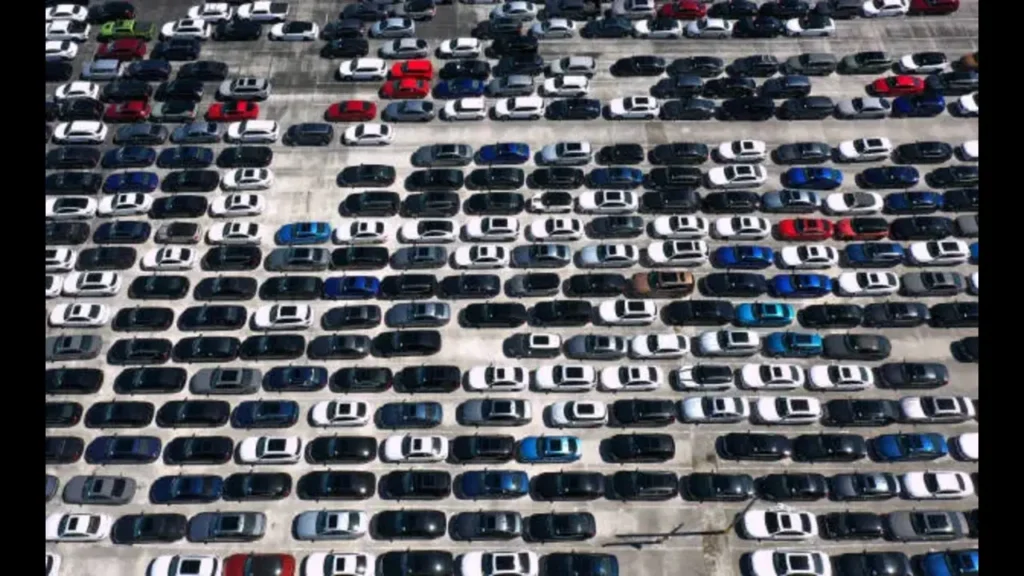
Car Imports and Re-Exports in Oman
Imported stock widens choice in Oman, bringing trims and specs not always present in domestic listings. Supply funnels typically originate in GCC markets, Japan, and Europe. The import chain follows a standard arc: sourcing, export deregistration, shipping by RoRo or container, customs clearance on a CIF base, duty assessment, and VAT at 5 percent. Documentation includes commercial invoice, bill of lading, certificate of origin, and export certificate. Once cleared, the vehicle enters inspection and registration under Royal Oman Police oversight.
Valuation during import shapes final retail price. CIF equals cost plus insurance plus freight. Duty applies to the CIF figure, and VAT applies to CIF plus duty and eligible charges. Exchange rates at clearance can shift VAT outcomes, so currency planning matters. For used vehicles with advanced driver assistance systems or hybrid components, a post-arrival diagnostic should test radar, camera calibration, and battery condition to prevent registration delays or early ownership costs. Flood-risk markets require additional scrutiny using corrosion points, harness inspections, and control-unit logs.
Re-export flows exist for traders serving regional demand. Vehicles can be cleared and then exported to nearby markets when arbitrage arises, provided documentary trails remain intact. That activity depends on tight storage management to avoid demurrage and on rapid inspection to grade inventory. Sandan Industrial City provides the operational base for both import preparation and resale readiness. Cars can land at the port, transfer to Sandan for reconditioning and photography, and list on platforms backed by verified inspection reports.
Compliance determines speed. Imported cars must satisfy age limits, emissions expectations, and safety checks before plate issuance. Where classic exemptions apply, proof of age and originality becomes critical. Insurance coverage must align with declared value and inspection outcomes. When documentation is complete and the inspection file is clean, imported units can move from port release to road-legal status quickly, turning international sourcing into a reliable supply path for Oman’s used car market.
Inspection, Registration, and ROP Verification
Every used car in Oman must undergo an inspection and ownership transfer process supervised by the Royal Oman Police (ROP). These checks confirm that the vehicle meets safety, emissions, and documentation standards before registration. Inspection is more than a formality; it ensures that cars circulating on Omani roads are safe, tax-compliant, and correctly identified through their Vehicle Identification Numbers (VIN). Skipping or mishandling this stage can delay ownership transfer or invalidate insurance coverage.
Inspection centers—many clustered within Sandan Industrial City—perform multi-point evaluations covering structural integrity, braking efficiency, lighting systems, emissions output, and underbody condition. The reports they produce serve as the technical proof required for registration. Buyers are encouraged to retain digital and physical copies, as ROP offices request them when issuing registration cards. Sandan’s facilities connect inspection bays, document desks, and authorized agents in one workflow, eliminating the need for multiple visits.
Documentation remains central to the process. Buyers must present a valid national ID or resident card, insurance policy, bill of sale, customs clearance (for imports), and inspection certificate. The ROP then verifies VIN, engine number, and legal ownership trail before issuing the registration card. Transfer fees vary based on engine capacity and vehicle type, with electronic payment options available at ROP counters. For imported cars, customs duty and VAT must be settled first, followed by inspection approval. Using regulated inspection hubs such as Sandan minimizes rejections, as vehicles are prechecked for compliance before official testing.
Inspections also protect resale value. A car with a continuous record of ROP-passed tests and consistent service documentation commands better market confidence. The combination of transparency, centralized verification, and clear documentation ensures that each step from purchase to registration aligns with Omani automotive law and financial best practices.
Financing and Insurance for Used Cars
Financing allows buyers to spread vehicle costs across predictable installments, while insurance protects against physical or third-party losses. In Oman, banks, Islamic finance entities, and specialized automotive lenders offer used car loans under defined eligibility parameters. The process begins with a vehicle valuation and verification of the buyer’s debt service ratio (DSR). Interest rates or profit margins depend on tenure, income stability, and vehicle age. Financing channels at Sandan Industrial City partner with multiple lenders, allowing approvals within hours once inspection reports and bills of sale are verified.
Financing terms typically range between two and five years, with down payments from 10% to 30%. Used cars beyond a certain age—often seven years—may require higher down payments or independent mechanical reports. Buyers can compare fixed-rate versus reducing-balance options to understand real borrowing costs. When a car is sourced through an authorized dealer inside Sandan, documentation support ensures loan paperwork aligns with ROP and insurance requirements, eliminating repetitive submissions.
Insurance is mandatory before registration. Policies split into two primary categories: comprehensive coverage, which protects against own-damage and third-party losses, and third-party coverage, which meets the legal minimum. Premiums depend on vehicle age, engine size, driver record, and intended use. For imported cars, insurers often require inspection certificates and valuation documents to determine market value. At Sandan’s insurance counters, customers can secure quotes, renewals, or multi-year packages directly after inspection, streamlining the registration process.
A well-structured purchase sequence integrates inspection, financing, and insurance without procedural gaps. Buyers who finalize these stages within regulated clusters like Sandan reduce coordination time, avoid document mismatches, and gain immediate access to ROP transfer counters.
Comparison Table: Dealers vs Platforms vs Groups
| Criteria | Verified Dealers (e.g., Sandan Showrooms) | Online Platforms | Social Groups |
| Verification Level | High – licensed and documented | Moderate – platform policies vary | Low – user-reported only |
| Warranty Support | Usually available | Rarely offered | None |
| Inspection Readiness | Provided or integrated on-site | Requires third-party coordination | Buyer must arrange independently |
| Price Transparency | Standardized with market references | Varies by seller accuracy | Highly variable |
| Financing Options | On-site or linked lenders | Some integrations | Independent bank contact |
| Insurance Facilitation | Immediate, often bundled | Limited | Buyer arranged |
| Ownership Transfer Support | ROP-aligned and documented | Requires manual follow-up | Typically absent |
| Risk Level | Low | Medium | High |
| Best Use Case | Buyers seeking verified condition and faster registration | Buyers exploring wide model options | Bargain hunters ready for due diligence |
This comparison underscores how each channel aligns with buyer intent. Verified dealers inside Sandan Industrial City deliver end-to-end assurance and compliance support. Online platforms provide breadth and market awareness but require extra verification steps. Social groups enable price discovery but place risk management entirely on the buyer.
By aligning channel choice with budget tolerance and desired convenience, buyers can navigate Oman’s used car market strategically, blending online discovery with Sandan’s on-ground verification for a complete, safe, and traceable transaction.
Common Buyer Mistakes and Safety Checklist
The used car market in Oman rewards diligence. Many buyers lose value not because of overpricing but because of incomplete verification or missed documentation. Common mistakes cluster around inspection shortcuts, unclear payment terms, and weak paperwork management. Recognizing these pitfalls early can turn a routine purchase into a secure, documented acquisition.
Skipping inspection remains the most frequent error. A clean exterior does not equate to mechanical soundness. Vehicles imported from humid or flood-prone markets may hide corrosion, electronic instability, or repainted sections. Independent inspection or Sandan Industrial City’s certified centers can uncover structural inconsistencies, paint mismatch, or ECU faults before payment. Neglecting this step often results in high repair costs or rejection during ROP verification.
Buying from unverified sellers introduces ownership risks. Informal transactions through social groups or roadside yards often skip the legal bill of sale, VIN match confirmation, and odometer authentication. Fraudulent sellers may advertise vehicles still under bank mortgage or without customs clearance. Authentic dealers at Sandan publish trade licenses, inspection reports, and transfer-ready documentation. Verifying these credentials secures both payment and title transfer.
Ignoring total cost projection creates budget friction. Final price extends beyond sticker value—it includes VAT, insurance, registration, and possible reconditioning. Financing also impacts long-term expenditure through interest or profit margins. Buyers should calculate total cost of ownership over a realistic three-year horizon, integrating maintenance schedules and insurance renewals.
Failure to comply with ROP procedures can delay roadworthiness certification. Registration requires valid inspection results, insurance proof, and proper paperwork alignment. Each missing document adds return visits and penalties. Using integrated service clusters such as Sandan ensures ROP compliance through direct coordination with official counters.
A functional checklist before purchase:
- Confirm VIN and chassis match all documents.
- Review full inspection report, not just summary pages.
- Secure a signed bill of sale listing condition and agreed price.
- Verify customs clearance for imported stock.
- Confirm active insurance and registration eligibility.
- Prefer traceable bank transactions over cash.
Proper sequencing—inspection, documentation, payment, registration—defines secure buying in Oman’s used car market.
Conclusion
Oman’s used car landscape offers accessible opportunities for buyers willing to align research, inspection, and compliance. Reliable pathways exist across verified dealers, online platforms, and social communities—but their safety margins differ sharply. Verified showrooms within Sandan Industrial City represent the market’s most integrated model, combining inspection, financing, insurance, and documentation under regulated oversight. This ecosystem minimizes procedural gaps and reduces the friction common in fragmented transactions.
Online platforms deliver scale and price visibility, guiding early-stage discovery and benchmarking. When paired with Sandan’s on-ground inspection, they balance choice with verification. Social groups continue to serve as lead sources for niche deals but should never replace formal inspection or ROP-aligned transfer procedures.
As vehicle technology, import diversity, and financing sophistication increase, structured environments like Sandan will shape Oman’s sustainable automotive infrastructure. Centralized inspection, certified workshops, and transparent dealer licensing create predictable experiences that appeal to both domestic buyers and expatriate residents.
Through diligence, documentation, and informed channel selection, purchasing a used car in Oman can shift from uncertain negotiation to a reliable, traceable transaction embedded within a regulated market framework.
Frequently Asked Questions (FAQs)
1. Where is the best place to find verified used cars in Oman?
Verified used cars can be found at licensed dealerships and clustered showrooms within Sandan Industrial City, where inspection, financing, and ownership transfer occur under regulated oversight. This industrial hub centralizes multiple certified dealers and inspection centers, reducing the risk of counterfeit documents and hidden defects.
2. Are online platforms like DubiCars or OLX Oman safe for buying used cars?
Online platforms such as DubiCars, OLX Oman, OpenSooq, and YallaMotor provide large inventories and price benchmarks. However, buyers should treat these platforms as discovery tools and always verify listings through physical inspection and VIN checks before finalizing payment. Routing the car for verification at Sandan inspection centers ensures legal and technical compliance.
3. How can I verify a used car’s ownership and registration in Oman?
Verification occurs through the Royal Oman Police (ROP) vehicle registration process. Buyers must present inspection certificates, bills of sale, valid IDs, and insurance policies. The ROP verifies the VIN, ownership history, and customs clearance for imports before issuing the registration card. Inspection facilities within Sandan Industrial City help prepare the documents and confirm compliance before submission.
4. Can imported used cars be registered and driven in Oman?
Yes. Imported used cars from GCC, Japan, or Europe can be registered once they pass ROP inspection and meet emissions and safety standards. Buyers must present customs clearance, VAT payment proof, and export certificates from the origin country. Many importers use Sandan’s workshops for reconditioning, valuation, and documentation to meet registration standards quickly.
5. What financing options exist for used cars in Oman?
Omani banks and Islamic finance companies offer loans for used vehicles with terms from two to five years. Financing usually requires an inspection report, proof of income, and valid identification. Dealers and finance partners inside Sandan Industrial City streamline approvals and integrate insurance coverage before vehicle registration, shortening the purchase cycle.

